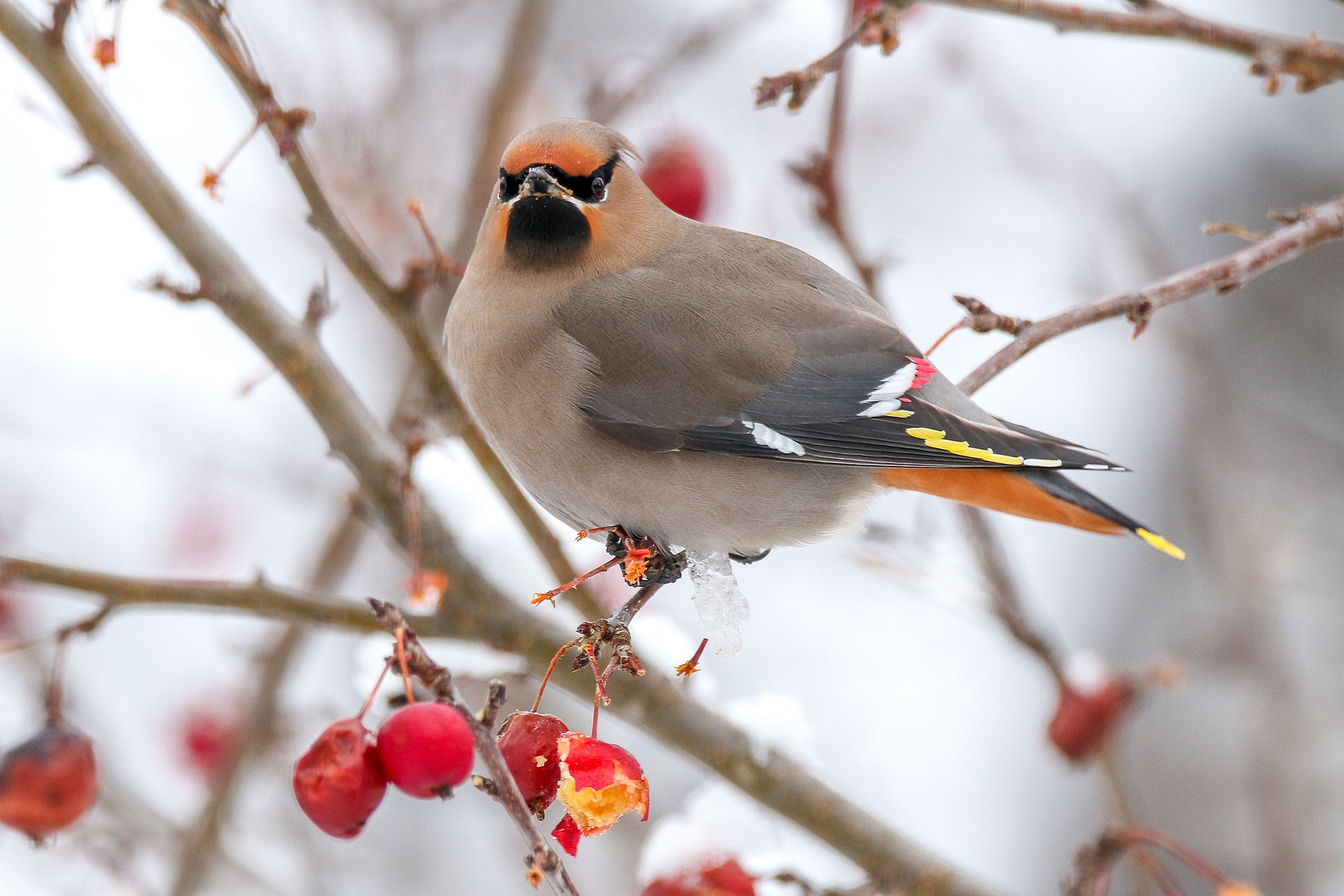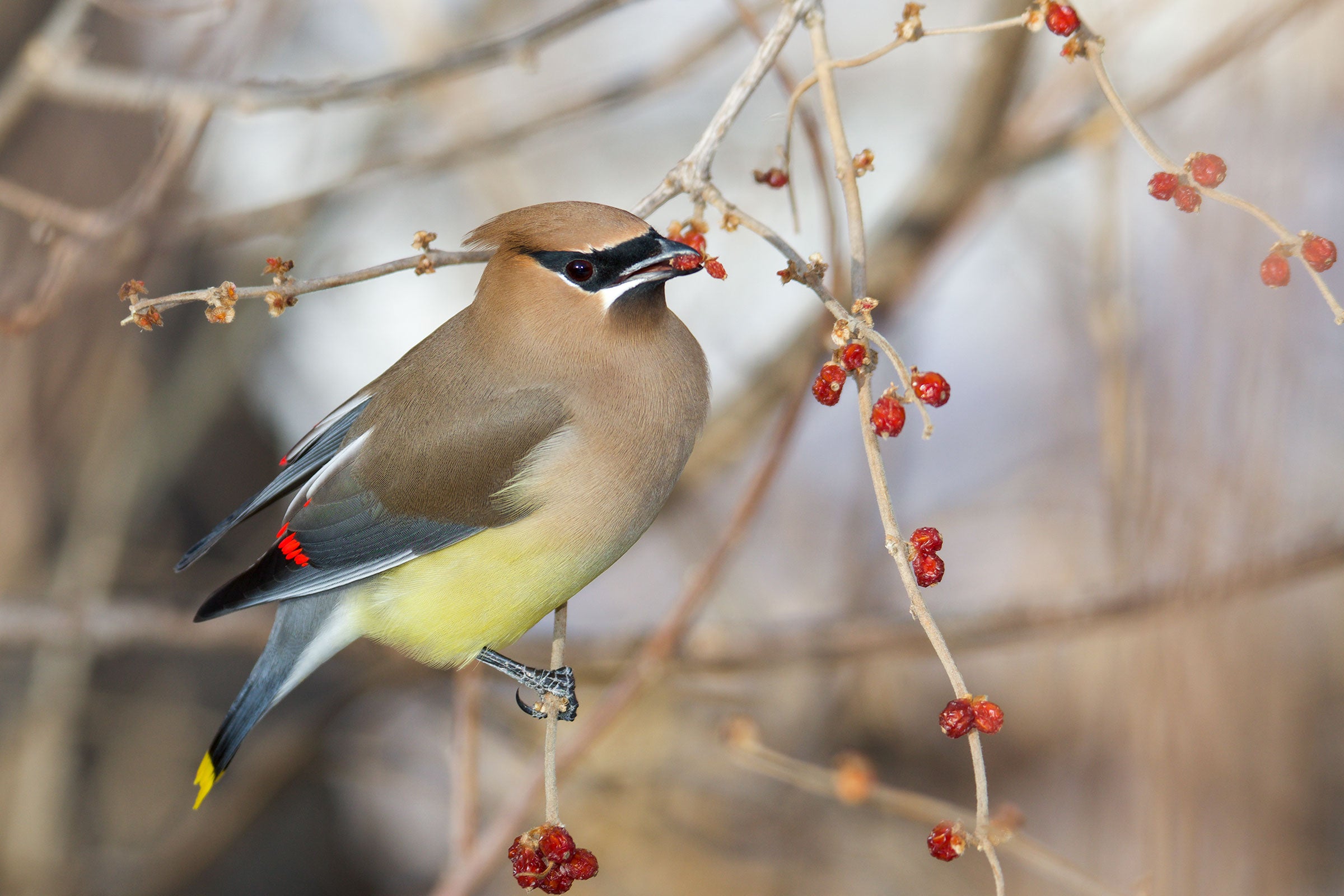When you hear a chorus of high-pitched see! notes overhead, expect a good time: A rambunctious flock of waxwings is on its way. Highly social birds that appear to have no sense of personal space, North America’s two waxwing species—Bohemian and Cedar—also look very similar. Telling these elegant birds apart makes for an excellent ID challenge.
During the breeding season, location can provide an initial gut check. Cedar Waxwings are predominant throughout the northern continental United States and southern Canada, inhabiting open areas or forest edges. Bohemian Waxwings are found mostly in boreal forests and muskeg in Alaska and western Canada, with some records in the northwestern United States, too.
But the species overlap in parts of their ranges, and that common ground grows during the winter, when both rove far and wide in search of food. Because of their fruit-heavy diet, you’re not likely to find either species at a bird feeder, but you might encounter them at any fruiting tree in their range, even ornamental trees in yards and parking lots.
During the winter months, Cedar Waxwings range further south than Bohemians on average, showing up throughout southern Canada, the continental United States, Mexico, and sometimes Central America. While Bohemian Waxwings are generally scarce and irregular south of the Canadian border, they can become locally numerous in the northern Rocky Mountains east to northern Minnesota. In years when food is scarce, they may wander southward along the Rockies or into the Midwest, New York, New England, and rarely even further south. These southward-straying Bohemians sometimes join up with flocks of the more common Cedars.
When you come across a flock with both species, size might be the most obvious differentiator. Cedar Waxwings are smaller, similar in size to a large sparrow. Bohemians are nearly an inch longer and twice as heavy; in flight, they may give the impression of a European Starling. However, size can also deceive. A Cedar Waxwing may look larger when flying solo or when fluffed up against the cold.
Certain plumage characteristics offer diagnostic identification points, too. Bohemians take on a cooler gray tone overall with a red-orange face, while Cedars appear sandy or tan. Bohemians also have more intricate patterning on their wings, with more white marks and a yellow streak running down their primary wing feathers. Finally, and perhaps most tellingly, Bohemians have rust-colored undertail coverts—the feathers that meet the tail on the bird’s underside—while Cedars’ undertail coverts are white.


The sexes look similar in both species, but male Cedar and Bohemian Waxwings both tend to have more extensive black in their chins than the females do. Males also have bigger waxy red tips—yes, it’s actually a waxy secretion—on their feathers than females, on average. Note that both features can be difficult to discern in the field. Meanwhile, juveniles of both species are grayer and streaky, and don’t take on their signature wingtips until they mature. It’s not totally clear what the wax wings are for, but older birds have more of them, so it’s possible that they signal the health, age, and social status of birds to other members of the flock.
The two birds sound similar and occasionally identical, but with practice you can usually differentiate them by voice. Cedar Waxwings make extremely high-pitched whistles and trills, which can sound almost insectlike. Bohemian Waxwings generally make a more guttural rattling trill, like a wet metal whistle.
As the winter approaches and migratory birds head south, the potential for a waxwing sighting provides a source of excitement and motivation to go out birding in the cold. Hopefully you’ll be rewarded this winter with opportunities to see and study both waxwing species, enjoy their antics, and gain a deeper appreciation of these charismatic birds.
This piece originally ran in the Winter 2022 issue as “What’s That Waxwing?”. To receive our print magazine, become a member by making a donation today.





